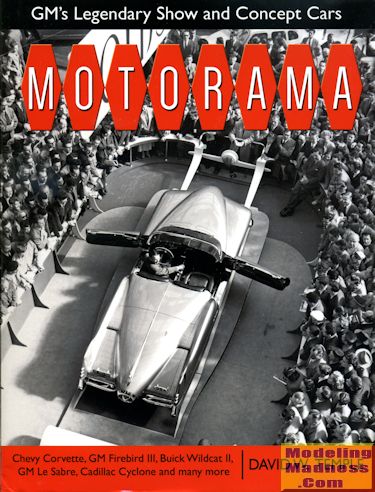 The 1950s
was, for all intents and purposes, a time of optimism in the United States. For
all intents and purposes, America was the leader of the world both militarily
and technically. There are many reasons for these feelings, the biggest, I
suppose, was that the nation suffered very little physical damage during the
world war and American industry was still going strong, whereas other nations
were in the throes of rebuilding or were on the down-slide in international
importance from their pre-war status.
The 1950s
was, for all intents and purposes, a time of optimism in the United States. For
all intents and purposes, America was the leader of the world both militarily
and technically. There are many reasons for these feelings, the biggest, I
suppose, was that the nation suffered very little physical damage during the
world war and American industry was still going strong, whereas other nations
were in the throes of rebuilding or were on the down-slide in international
importance from their pre-war status.
Nowhere in the US was this more obvious in the dreams of its
automobile designers. It was a time of innovation in the style of the
automobile. No safety concerns, no need to be thrifty with fuel, it was a time
when longer, lower and wider held sway in the eyes of many automobile companies.
America had entered the jet and rocket age with a roar and much of that was to
influence the design of US cars. However, even like today, these changes in
design did not just appear out of nowhere.
American car buyers were, for the most part conservative in
what they liked. In order to gauge how well design features would be accepted by
the public, car companies developed concept cars to provide a look at possible
features for new cars. No company was more into this than General Motors.
Thanks to the inspiration of men like Harley Earl, GM
developed some pretty impressive vehicles during the mid-late 1950s and to show
off these cars, created the Motorama, a travelling auto show that featured not
only current model cars, but specialty show cars as well. Those who are fans of
NASCAR racing know that the Daytona 500, the sport's premiere event, offers a
trophy named after Harley Earl that features one of his more radical vehicles
atop it, the turbine powered Firebird.
Motorama ran from 1955 until 1961, when the cost of the show,
the realization that GM was giving away design ideas to its competitors and the
discovery that advertising on television reached more people for less money than
a travelling car show. During this time over three dozen exciting designs were
developed for the show, most of them fully operative, including their turbine
cars, and sporting names that would soon adorn standard automobiles.
Names like LeSabre, Corvette, Starfire, Nomad, Biscayne,
Firebird and Park Avenue first adorned these 'dream cars' before they ever saw
light on a standard Buick, or Oldsmobile, or Chevrolet. What is even more
amazing is that many of these cars were used for daily transportation by GM
executives and many of them are extant even today.
In this book, the author covers each and every one of these
cars within the contest of the Motorama as well as how it and others changed
over time and its eventual fate (if known as there are still some that have not
been accounted for). There are dozens of photographs of these cars during the
time they were being displayed as well as how they look now. This includes
photos of the engines, interiors and other design features. A full set of
specifications in terms of the car's performance is provided when that is
available and germane (for a few of these fantasy cars were show only and unable
to move on their own power due to the lack of a functional drivetrain).
Whether you consider yourself a car person or not, this is an
absolutely fascinating look into a time gone by and some pretty wild creations
by anyone's standards. Most highly recommended.
February 2015
Review book courtesy of
 ,
where you can order your copy of this and many other superb aviation and
modeling books. Visit their website at the link above or call them at
1-800-895-4585
,
where you can order your copy of this and many other superb aviation and
modeling books. Visit their website at the link above or call them at
1-800-895-4585
If you would like your product reviewed fairly and fairly quickly, please contact
the editor or see other details in the Note to
Contributors.
 The 1950s
was, for all intents and purposes, a time of optimism in the United States. For
all intents and purposes, America was the leader of the world both militarily
and technically. There are many reasons for these feelings, the biggest, I
suppose, was that the nation suffered very little physical damage during the
world war and American industry was still going strong, whereas other nations
were in the throes of rebuilding or were on the down-slide in international
importance from their pre-war status.
The 1950s
was, for all intents and purposes, a time of optimism in the United States. For
all intents and purposes, America was the leader of the world both militarily
and technically. There are many reasons for these feelings, the biggest, I
suppose, was that the nation suffered very little physical damage during the
world war and American industry was still going strong, whereas other nations
were in the throes of rebuilding or were on the down-slide in international
importance from their pre-war status.